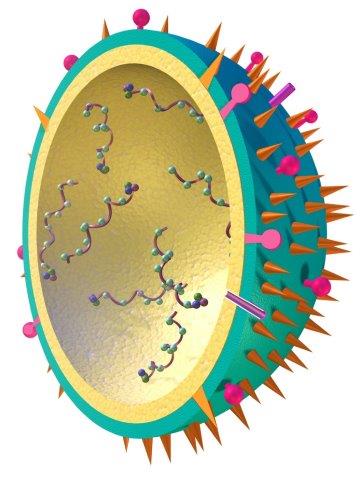FOR IMMEDIATE RELEASE
ACS News Service Weekly PressPac: July 24, 2013
Pressurized virus blasts its infectious DNA into human cells
"Herpes Virus Genome, the Pressure is On"
Journal of the American Chemical Society
The virus that causes those painful lip blisters known as cold sores has an internal pressure eight times higher than a car tire, and uses it to literally blast its infectious DNA into human cells, scientists are reporting in a new study. Discovery of the pressure-driven infection mechanism — the first in a human virus — opens the door to new treatments for viral infections, they add in a study in the Journal of the American Chemical Society.
Alex Evilevitch and colleagues point out that the viruses responsible for influenza, AIDS and other infections that affect millions of people annually are quick to develop resistance to drugs that target viral proteins. Through genetic mutations, these proteins can quickly disguise themselves and evade anti-viral drugs. That has led to a search for vulnerabilities that don’t involve viral proteins. Evilevitch’s team looked at the pressure inside the herpes simplex virus 1 (HSV-1), the virus that causes cold sores.
They describe how HSV-1 enters cells, docks with portals on the nucleus and injects DNA with high pressure caused by tight packing of the capsid, the tough shell that houses the viral genome. Researchers already knew that several viruses that infect bacteria, called bacteriophages, use the same high-pressure mechanism to shoot their DNA into bacteria nuclei. Evilevitch and colleagues conclude that evolution has preserved this effective technique as a key step in viral infection — making it a desirable target for future treatments to defeat HSV-1 and other viruses that work the same way. The same mechanism exists in eight related viruses, including those responsible for mononucleosis and chickenpox in children, and shingles in adults. Drugs that interfere with it thus could limit “the potential for development of drug resistance that can occur due to rapid adaptive mutations of viral genomes,” the scientists state.
The authors acknowledge support from the Swedish Research Council, the National Science Foundation, the National Institutes of Health and the Mellon College of Science.

High-resolution image

